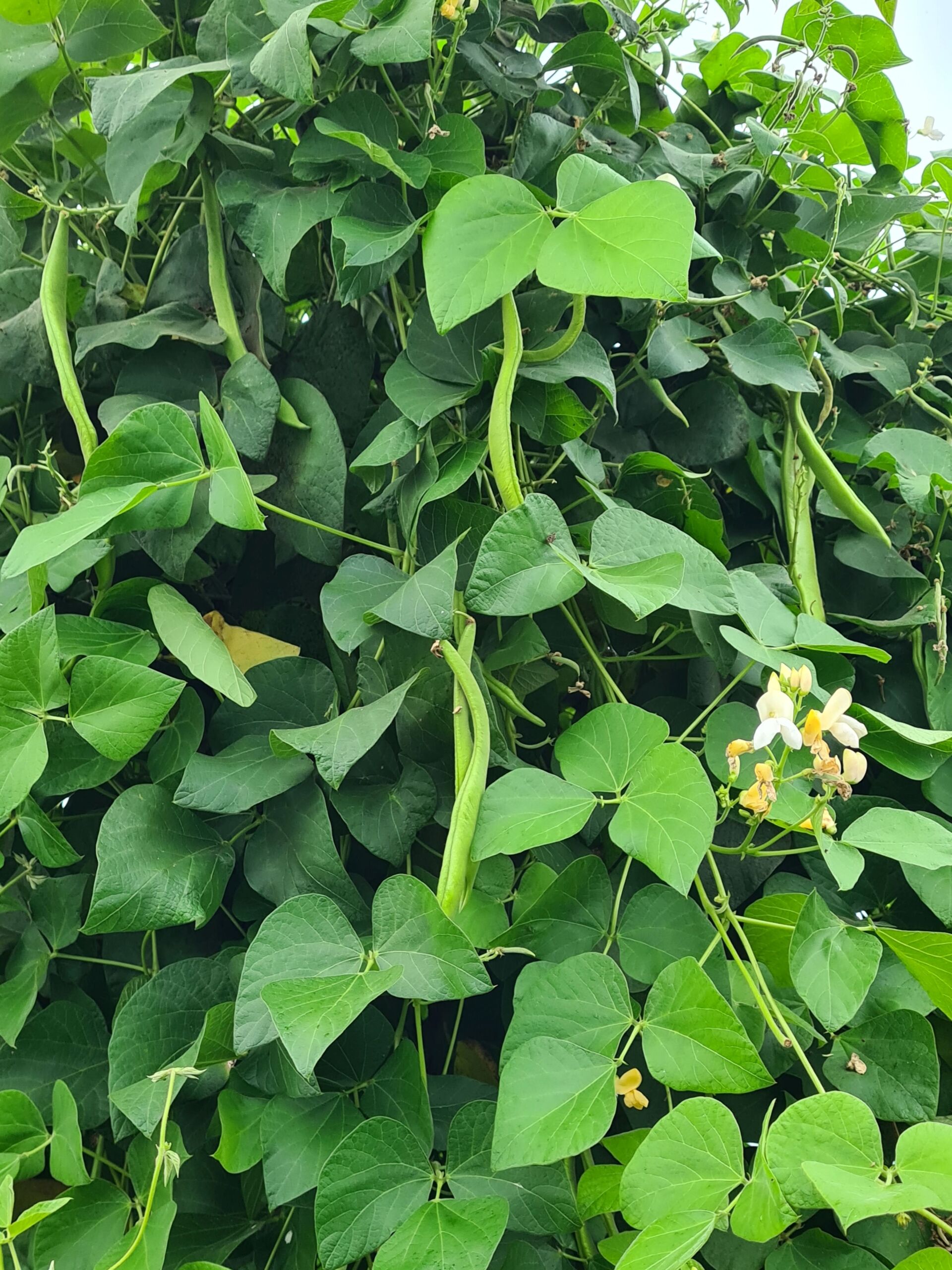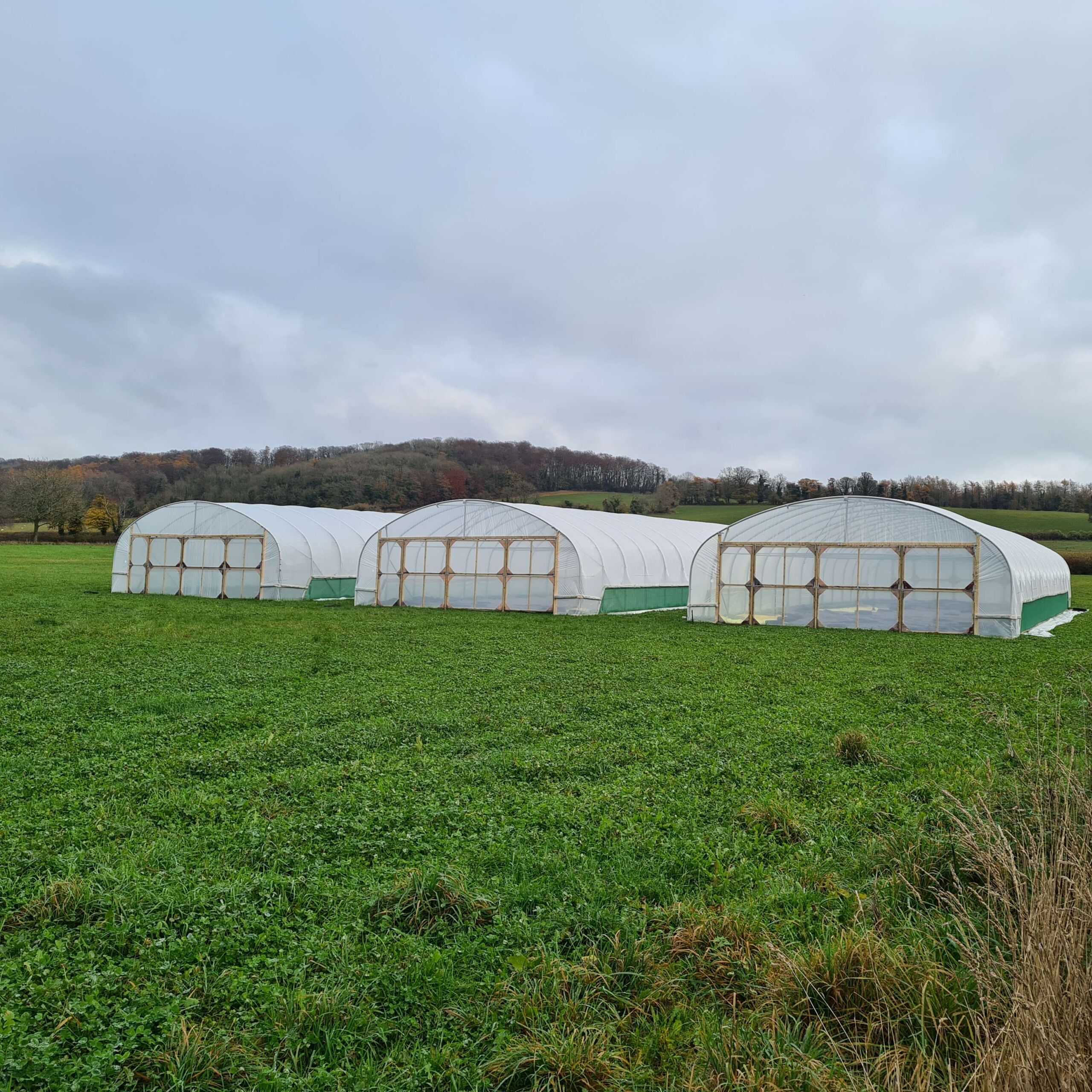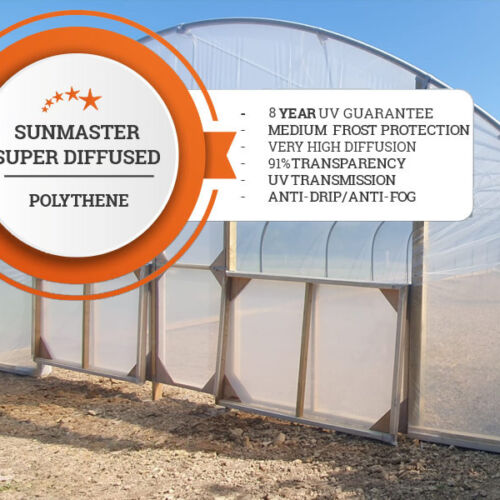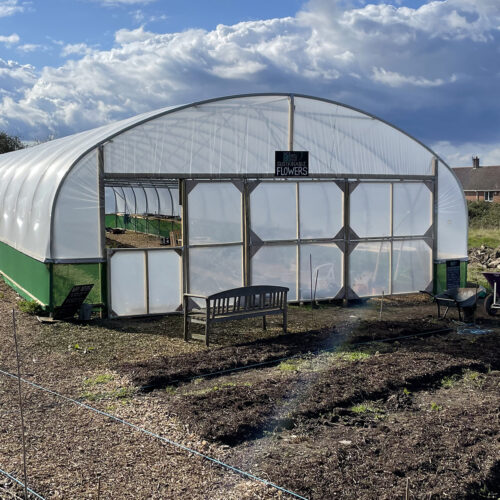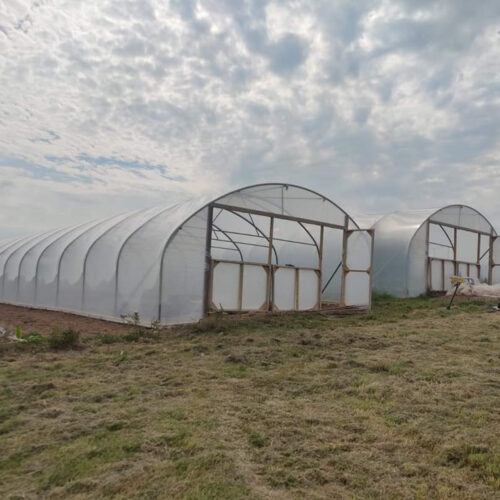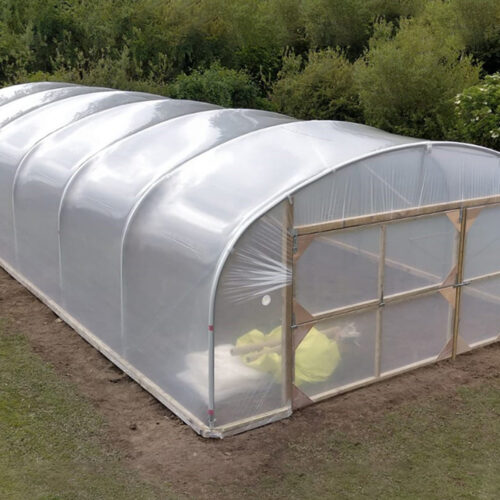Polytunnel Grape Vine
Growing a Grape Vine in your polytunnel
Grape Vines need fairly deep, free-draining soil with plenty of sunlight to ripen properly. Your vine will grow in good garden soil and in a sun lit position. Indoor cultivation such as a polytunnel gives better and more reliable crops, especially in northern regions.
In their first year, water grapevines before the soils dries out. A vine inside the polytunnel need careful watering. Ideally plant from October to March
Mulch in spring when the soil is moist, to suppress weeds, then place stones or gravel, a few inches deep, around the base of the vine. Gravel absorbs sunlight into the canopy of the grapevine so warming the soil.
Varieties to buy
Red Wine Grape
Regent – Has good disease resistance and makes good-quality wine. It is high yielding and sweet.
White Wine Grape:
Seyval Blanc – Has a good resistance to powdery and downy mildew. It is a reliable cropper and is useful in blended wine or sparkling wines.
Chardonnay – This early ripening, highly scented, dark golden grape, is excellent as a dessert or for wine.
Dessert Grape
Black Hamburg – We have this one, a delicious flavour, heavy yielding, and ideal for an unheated polytunnel.
Buckland Sweetwater – This grape ripens quite early, it is tasty, and gives a high yield. It is suitable for a small polytunnel, and may need extra feeding.
Buying and planting
Buy a vine that is not pot bound and has healthy green foliage. Dig over the soil, break up any compaction and enrich the soil with compost or fertiliser. Ideally plant between October and March.
Cultivation
Dessert grapes need to be grown in a green house or polytunnel to ripen properly. You can also plant the vine in a container, grow in the polytunnel or a conservatory, and place the container outside in the winter
Keep the polytunnel doors open on bright days during spring and summer and dampen the soil when the grape bunches are ripening.
Pollination needs a dry atmosphere. Gently shake the branches to help pollination
Water frequently during the growing season, and feed with a high potash liquid fertiliser, tomato feed is okay, once growth starts in spring.
Check your grape bunches two to three times a week and remove any that are diseased or damaged.
It is not necessary to heat the polytunnel. Ventilate by leaving the doors open in still, cold dry weather until early spring. Dessert grapes need a period of dormancy.
In August to September, remove the leaves to expose the branches to sunlight and improve air circulation.
Harvesting
Grapes are ready for picking when they feel soft to the touch and taste sugary. The skins on white grapes often change from deep green to a translucent yellow and become much thinner. The best way to tell when grapes are ready is by tasting them – only when they’re at their sweetest, will they be ready. Cut the bunches with the stalk still attached.
Dessert grapes are best eaten as soon as possible after harvesting, but they will keep for about two weeks if stored in the refrigerator.
Pruning and Training grapes
Train the vine branches horizontally about a foot apart along wires between bays inside the steel frame work, and along the top of the polytunnel, Crop bars are very handy for this
The main pruning time is early winter, late November – December. Training and pinching out of new shoots, as well as fruit thinning, takes place in spring and summer.
Our vines are planted outside with the trunk and stems trained inside. Vines grown this way rarely need extra watering and are easy to feed and manage.
Problems
We have bird problems but not the others listed below, so would be a shock if we did!!
Mealy bug: Small creatures covered in a white ‘meal’ cluster in inaccessible spaces like leaf joints or under loose bark. They suck sap and secrete ‘honeydew’ which causes black sooty mould on the leaves.
Remedy: Use sprays based on plant oils or soft soap.
Glasshouse red spider or two spotted mite: Leaves become mottled, pale and covered in webbing, on which the mites can be clearly seen; leaves also drop prematurely.
Remedy: They thrive in hot, dry conditions, so mist plants regularly. Use sprays based on soft soap, plant oils or extracts.
Birds: Birds, especially blackbirds and pigeons, can cause an array of problems including eating buds, leaves and fruit
Remedy: Protect the plants from birds by covering them with netting or fleece. Scarecrows and bird-scaring mechanisms work for a bit, but the most reliable method of protection is to cover the vine with horticultural fleece or mesh. [We supply these]
Powdery Mildew: Appears as a white powdery deposit over the leaf surface and leaves become stunted and shrivel.
Remedy: Keep the soil moist, grow in cool locations, and spray using plant and fish oils or sulphur-based
Grey mould: This is a problem normally in wet conditions, and is usually worse on weak or damaged plants. The mould usually enters through a wound but, under the right conditions, even healthy plants will be infected. You will see fuzzy grey mould on affected buds, leaves, flowers or fruit. Infected plant parts eventually shrivel and die.
Remedy: Hygiene is very important in preventing the spread of grey mould. Remove the infected material and destroy. Grey mould is encouraged by overcrowding
No fungicides are approved for use by amateur gardeners against grey mould. Products containing plant and fish oil blends may be used but are unlikely to have much impact.


